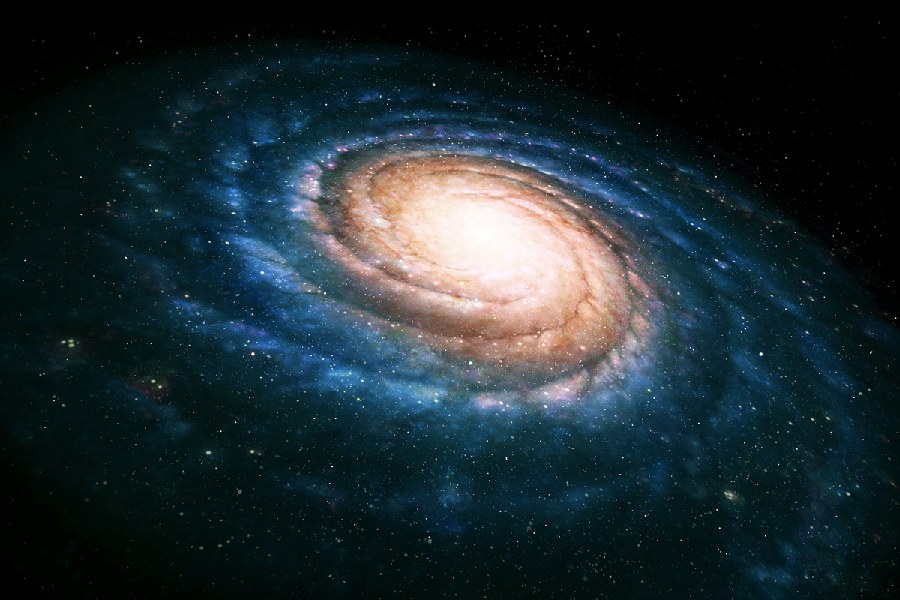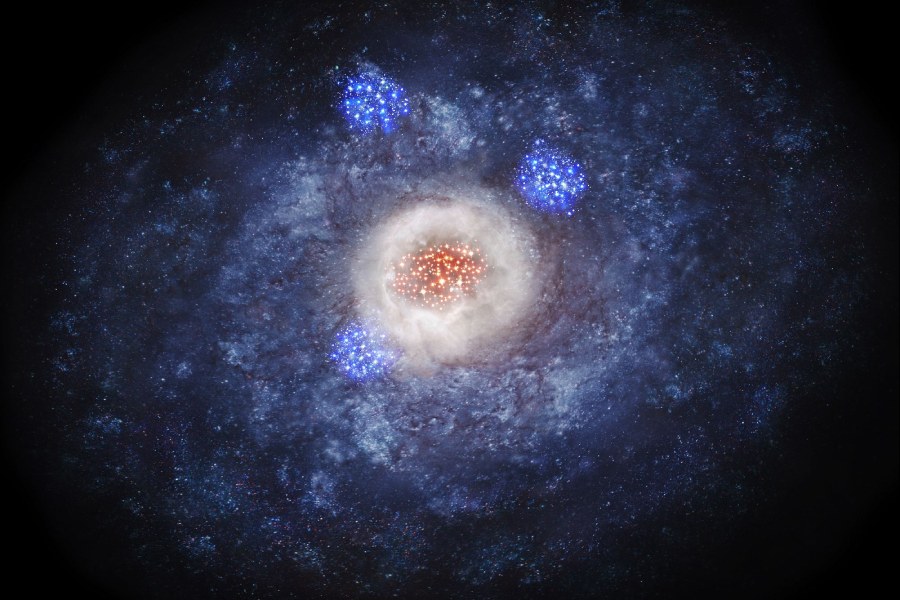In the vastness of space, galaxies shine like celestial wonders. Each galaxy is a dance of stars, gas, and dark matter. But how are galaxies named? How many named galaxies are there?
Naming galaxies involves a mix of science, mythology, and human imagination. From spirals to ellipticals, the names tell a story of astronomy’s history. Astronomers, peering into the cosmos, decode its secrets. Galaxy names become more than labels; they’re windows into our curiosity and quest to understand the universe.
Join the journey as the names of galaxies spark interest, inviting people to explore the cosmic tales that have shaped our understanding of the cosmos.

How Are Galaxies Named?
Galaxies receive their names based on their appearance and the details of their discovery. Some are named after the constellation, followed by a catalog number, such as the Andromeda Galaxy in the Andromeda constellation. Others, like the Whirlpool Galaxy, get descriptive names reflecting their unique shapes, in this case, swirling with dense starry arms.
Telescopes are crucial in uncovering new galaxies within our observable universe, among the billions present. Astronomers then catalog and characterize each discovery.
This process is essential for advancing our understanding of galactic mapping and naming, with astronomers at the forefront of these discoveries. Overall, the exact number of named galaxies is unknown, but there are estimated to be hundreds of billions within the observable universe, with ongoing discoveries.
Historical Evolution of Galactic Naming
Early observations and nomenclature
Early stargazers saw the band of the Milky Way and other fuzzy patches dotting the sky. Galileo viewed them with early telescopes in 1610. He called them “Nebulae”, meaning clouds. Later, astronomers realized these nebulae were galaxies.
For centuries, astronomers only named galaxies after the constellations they happened to lie in the sky. The Andromeda Galaxy was named for the nearby Greek heroine constellation. Smaller galaxies got designated labels based on larger, dominant galaxies nearby.
Pioneering astronomers and initial galaxy identification
In the 1700s, comet hunter Charles Messier cataloged nebulae-like objects. To avoid confusion, his list distinguished galaxies from comets. Astronomer William Herschel also mapped thousands of star clusters and galaxies, exploring the depth of the cosmos.
Early astronomers thought galaxies were part of our galaxy. Only in the 1920s did Edwin Hubble prove the Andromeda galaxy was independent, a “galaxy island universe” millions of light years away. Now, we know of billions of galaxies located many light-years away.
Advances in Telescopic Observations and Classification
Standardization and organization of galactic names
In the 1920s, astronomers created naming standards as more galaxies were discovered. Galaxy names now follow coordinate rules. For example, “NGC 224” means the 224th nebula in the New General Catalog sky map, and other catalogs use letters.
Multiple galaxy catalogs emerged, mapping certain sky zones. Compiling these catalogs globally remained difficult. So, the International Astronomical Union (IAU) defined 88 constellations encompassing the entire sky to anchor galaxy names. This provided a systematic organization framework tying galaxy labels to dedicated zones of the heavens for consistent celestial cartography.
Classification systems for galaxies
The astronomer Edwin Hubble started classifying galaxies by their shape and structure. He introduced the Hubble Tuning Fork, which categorized galaxies into spiral, elliptical, and irregular types based on their patterns. Hubble’s system formed the basis for morphological galaxy classification.
Subsequently, astronomers expanded on this by introducing more detailed classifications for spiral arms and grouping ellipticals based on elongation. These efforts aimed to establish a connection between a galaxy’s shape and its evolutionary history in the universe.

Hubble’s Galaxy Classification Scheme
Description of Hubble’s Tuning Fork Diagram
In 1927, Edwin Hubble classified galaxies based on appearance in his “Tuning Fork Diagram”. It has spirals branching one way and ellipticals the other way. Lenticular (S0) galaxies are in the middle, sharing both arms for transitioning members.
Hubble’s tuning fork visually demonstrates how he grouped spiral, elliptical, and S0 lenticular galaxy shapes. Ellipticals appear at one end, potentially transforming into spirals and barred spirals over time as matter rotates. However, the diagram does not represent irregular galaxies lacking a distinct pattern.
Linking morphology to galactic names
Galaxy naming incorporates morphology features through catalogs. Spirals receive labels like “Sc” for central bulge size or “SBb” for bar strength. Ellipticals are assigned “En” labels based on their elongation or flatness, ranging from circular shapes to no elongation (E0) and flattened (E7). Irregulars are simply labeled “Irr.”
Spiral galaxy names focus on highlighting distinct swirled arms and central bulges. Meanwhile, elliptical names emphasize smooth shapes, ranging from spherical (E0) to flattened (E7). Irregulars indicate chaotic and asymmetric structures, earning them names that reflect their starburst patterns and chaotic appearance.
Naming Conventions and Galactic Identifiers
Catalogs and designations
Astronomers use catalogs to map galaxies across different sky zones. These historical and modern catalogs are identified by abbreviations that serve as galactic name prefixes. An example is M51, which denotes the 51st galaxy in Charles Messier’s 18th-century catalog.
Notable catalogs, like Charles Messier’s, were created to list nebulae-like objects to help astronomers avoid them during comet hunting. The New General Catalog (NGC), a comprehensive compilation, documents thousands of galaxies and other deep sky objects. These widely acknowledged catalogs serve as a foundation for common galaxy names.
Use of catalogs for galactic identification
Galaxy names come from catalogs that pinpoint their location coordinates. Identifying an unfamiliar galaxy involves visually comparing it to a cataloged one and using the label format from that catalog.
Messier galaxies are assigned identifiers as “M” plus a number, determined by the order of their discovery. On the other hand, NGC labels indicate the entry order in a much larger catalog that maps galaxies across the northern and southern skies.
Understanding common acronyms and numbering systems
Acronyms like M, NGC, IC, etc., originate from different galaxy catalogs, survey projects like SDSS and 2MASS, and telescope names like HST. Morphology codes like SBC are also included.
Numbers are assigned based on catalog order as observers map newly discovered galaxies. Nowadays, computerized mapping automatically gives systematic labels using sky coordinates.
Unveiling the cosmic alphabet soup
Codes from different catalogs, surveys, and classifications combine to form name strings such as NGC 4650A SB0 pec. This alphanumeric “alphabet soup” paperwork tracks the history of observations, creating a complex record.
These designations uniquely identify galaxies, including coordinates, discovery details, and key traits. They serve as a scientific communication tool, helping researchers navigate the intricate mosaic of galaxies.

Conclusion
How are galaxies named? We explored the intricate process behind how galaxies spanning the celestial sphere are named – from early celestial cartographers tagging star cities by constellation to modern automated survey pipelines assigning systematic labels.
Understanding the techniques and conventions behind astronomy designations improves intuition when navigating references and engaging in cosmic discoveries. Telescopes continually unveil new galactic treasures in the deep frontier, leading to a constant need for cataloging and naming more galaxies.
We hope that by diagramming the logic behind systems like the IAU organizational framework for constellational identifiers, we illuminated crucial foundations. These foundations enable a better grasp of each discovery.
